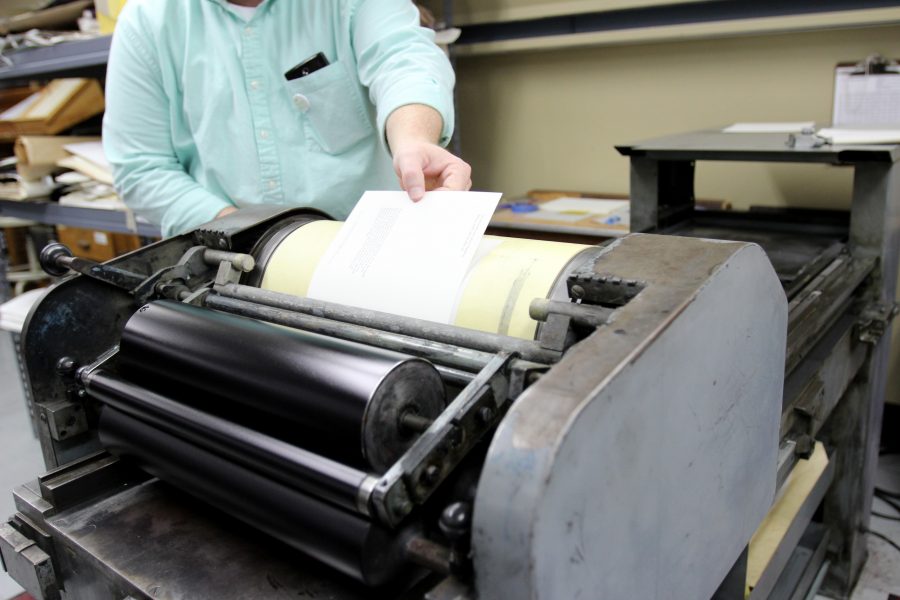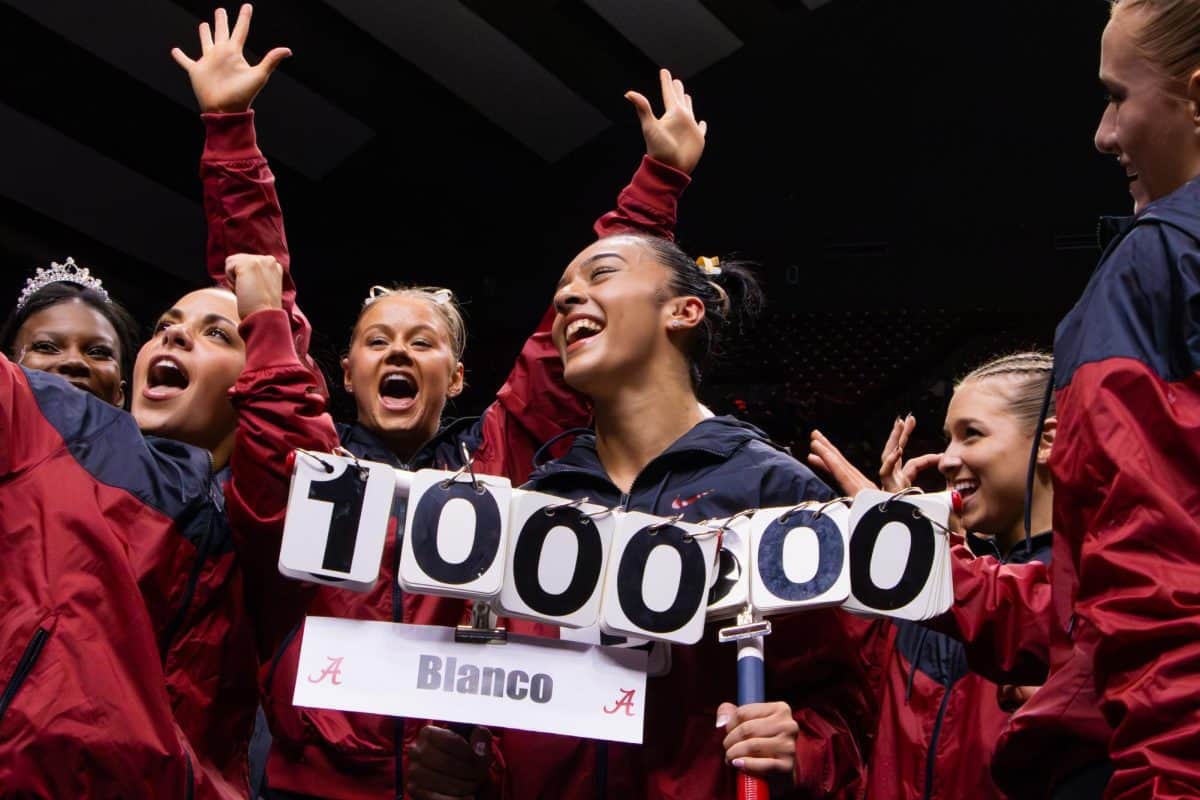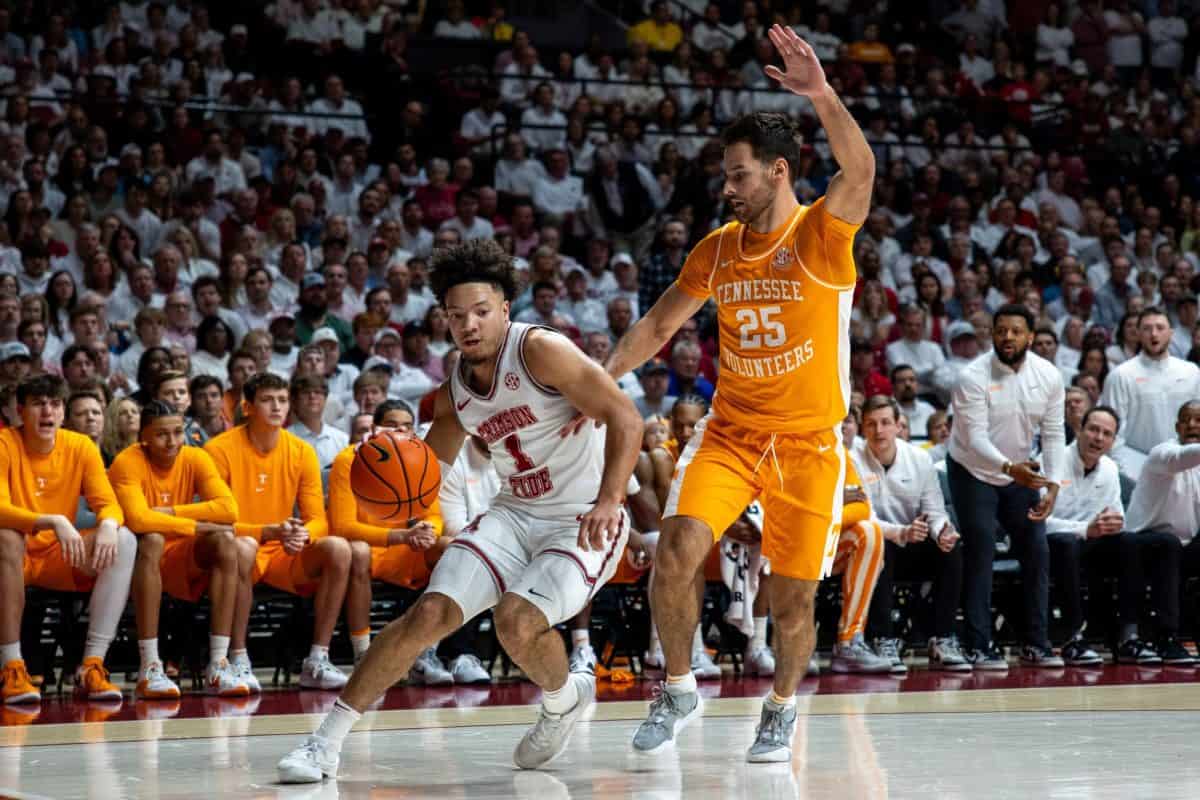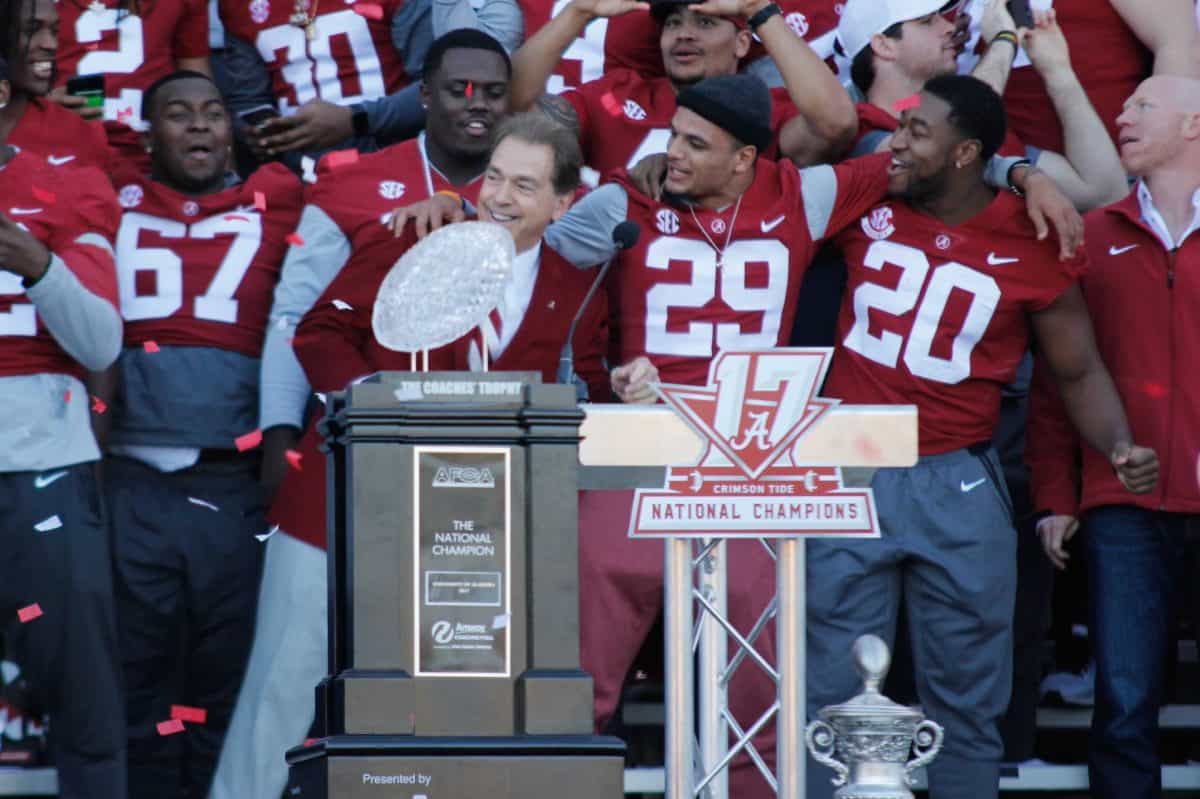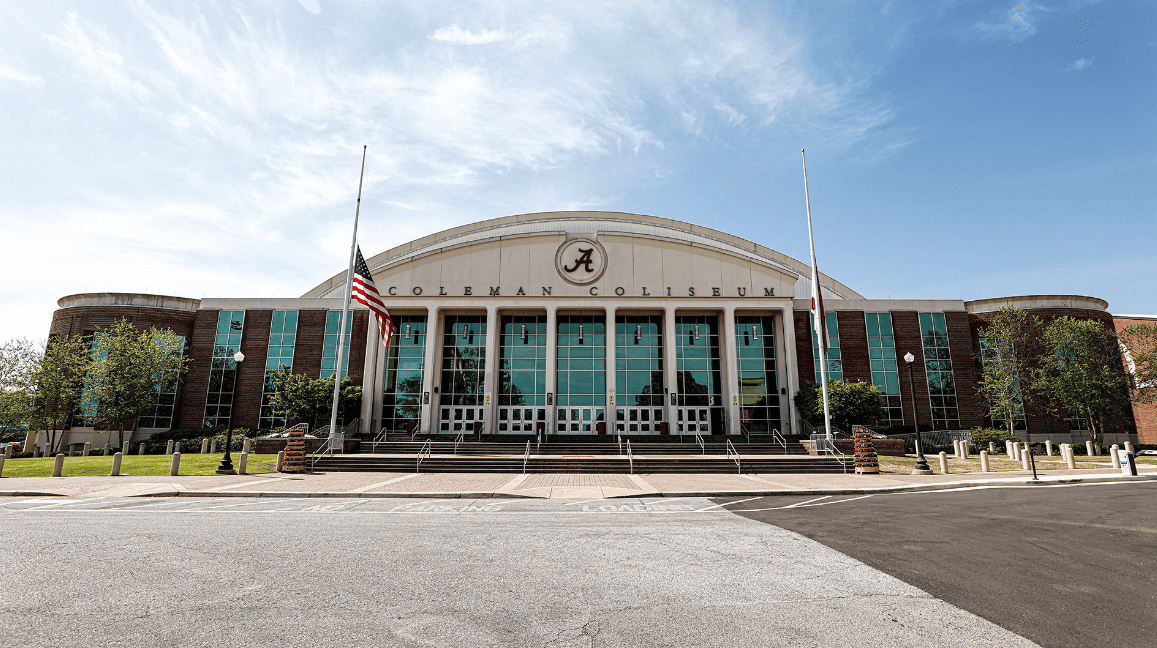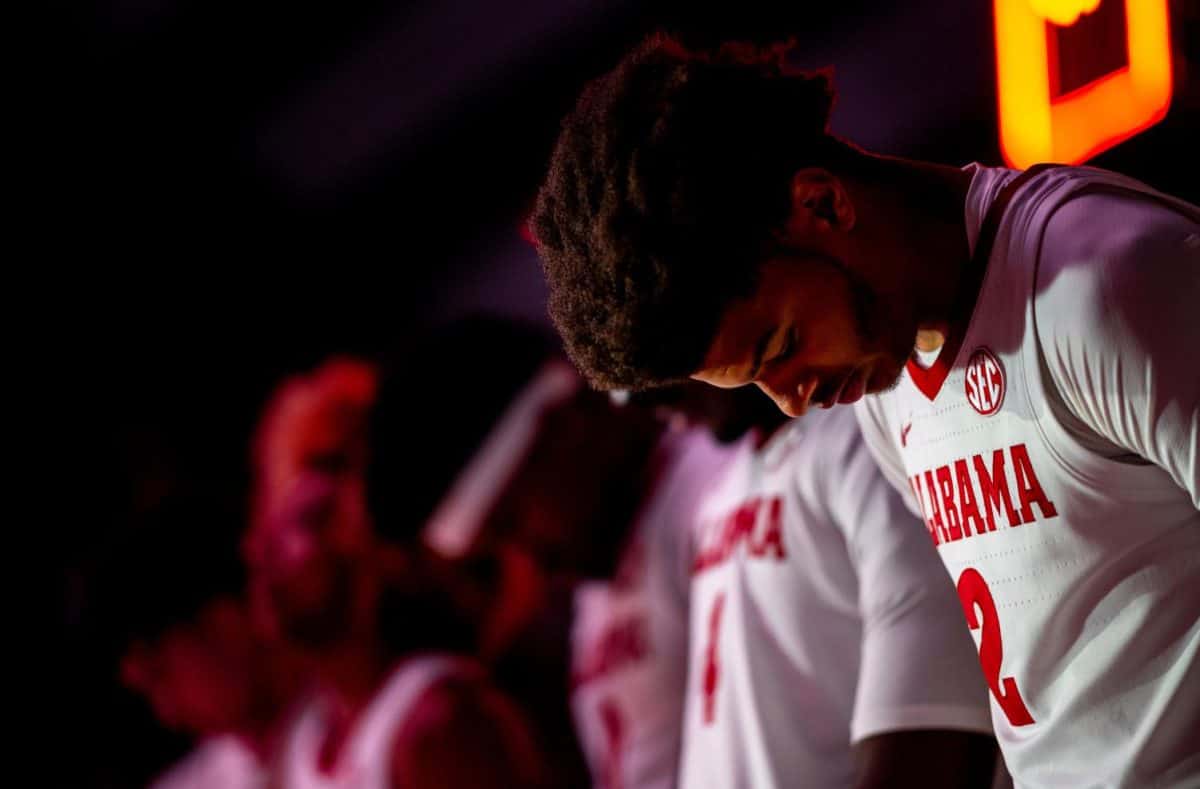The fifth floor of Gorgas Library is filled with beautiful leather-bound books of art, iron cutting boards, and giant wheels that apply wet ink to crisp paper. One of the floor’s well-fenestrated halls looks out over the Gothic towers and spires of the oldest buildings on campus. It’s a tiny section of the modern University that reflects the sensibilities and craftsmanship of an art form that goes back millennia.
This is the headquarters of the University’s School of Library and Information Sciences and the home of the oldest book arts program in the United States. This master’s degree instructs students in the craft of creating handmade pamphlets, journals and books. It might seem antiquated in an era where more and more people get information and entertainment online. But Anna Embree, a bookbinding teacher at the college, says the rise of electronic media have made people hungry for the intimacy of artful printing.
“There’s a growing market and a growing interest,” Embree said. “I think that the DIY thing that’s been going on craft-wide is sort of symptomatic of what’s happening. The more people feel removed from physical objects and physical handwork, the more intrigued they are by it.”
Embree believes that the idea that print books are slowly being eliminated is an exaggeration. She said physical books are still being made. They’re just now mass-produced products objects of low quality. Because of this, the book arts are gaining interest among the public.
“The hand-crafted, well-crafted, well-articulated handmade book, whether it’s an artist book, or a fine-pressed book, or even blank books for journals – I think they have all been elevated by the downgrading of normal print culture,” she said.
Students who enter the book arts program come from a variety of backgrounds. Most are writers or artists who stumble onto the craft later in their life.
“A lot of times people don’t really know about the book arts until they experience a letter-press printed card, or book, or a handmade journal,” she said.
Students going for an MFA in book arts take classes in book binding, printing and paper making. Through their classes, they create their own original books and fill them with content of their choosing. Some print their own stories and images while others reach out to student or professional writers and artists.
“The artistic side is kind of open,” said Kyle Clark, a graduate student studying book arts, when speaking about printmaking classes. “They don’t really tell you what to do. You just have a set criteria of this type of print, and you have to have good craftsmanship.”
Getting their work into galleries and shows is important for some aspiring bookmakers. Unlike usual art exhibitions, these displays often allow viewers to touch and manipulate the object being displayed.
“People are used to not touching work in galleries,” Embree said. “If you go into a book arts exhibition, there will be signs that say ‘Please Handle The Work.’ Or there will be white gloves sitting out so that people will understand they can actually touch it.”
Once students have their degree, there are many different paths they can take. Some set up their own binding or printing shops. Others go into book design. Still others join conservation staffs at libraries and museums and work to maintain older examples of printed craftsmanship.
Clark spoke about his plans to continue his dedication to the printed page.
“I’m planning on continuing my artistic practice and making artistic books,” he said. “But I’m also thinking about pursuing a career in conservation.”

